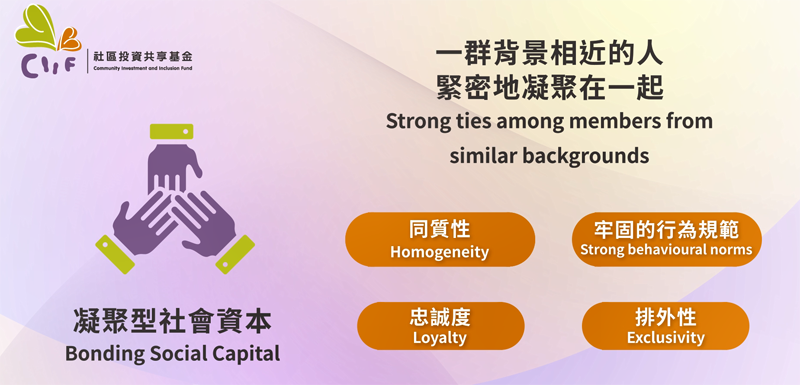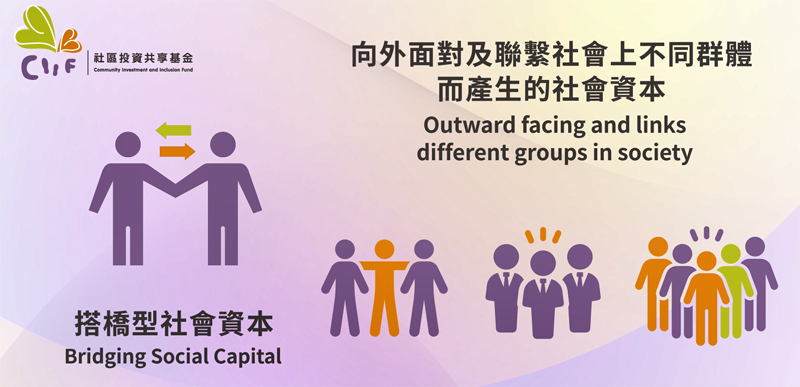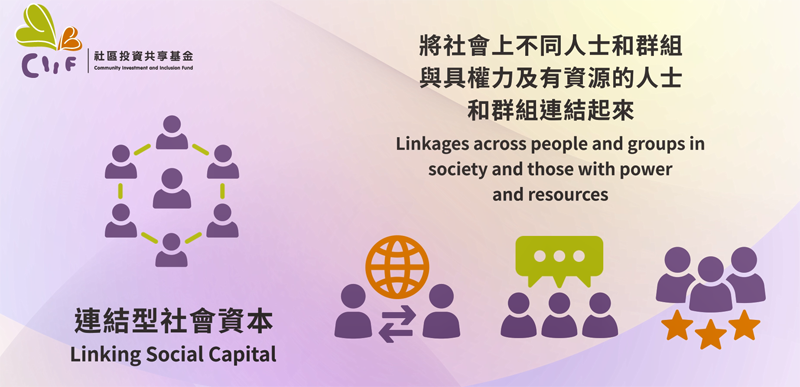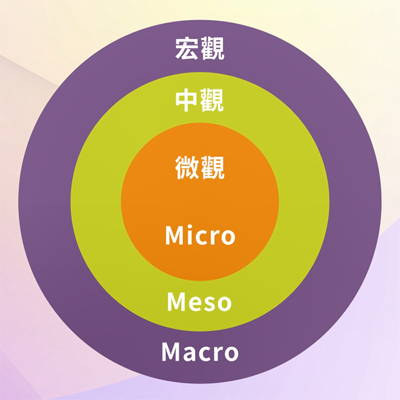Section One: Introduction to Social Capital Theory
Categories and Levels of Social Capital
Bonding, Bridging, and Linking Social Capital
Bonding Social Capital is an internal phenomenon within a group, where individuals with similar backgrounds form tight bonds with one another. This can be reflected in the group's homogeneity, strong behavioural norms, loyalty, and exclusivity (Figure 6). A typical example is a group formed by a few closely connected new immigrant families who need mutual support (Onyx & Bullen, 2001; Putnam, 2000).
Types of Social Capital |
Bonding Social Capital |
Bridging Social Capital |
Linking Social Capital |
|---|---|---|---|
|
Characteristics |
Strong ties among members from similar backgrounds |
Relatively weak ties among members from heterogeneous backgrounds |
Connections among individuals or organisations from different classes or status |
Examples |
Family members, close friends |
General friends, colleagues and various community members |
Cooperation between individuals or community organisations and government departments |

Bridging Social Capital refers to outward-facing social capital that links different groups in society (Putnam, 2000) (Figure 7). This includes social connections with general friends, colleagues, and people from various racial and cultural backgrounds.

Linking Social Capital refers to linkages across people and groups in society and those with power and resources (Figure 8). Through these connections, cultures, values and systems within institutions, society, and even nations can be changed (Woolcock, 2001).

Structural, Relational and Cognitive Social Capital (Table 2)
Structural Social Capital refers to the relationships, networks, organisations, and institutions that connect people and groups (Coleman, 1988). Structural social capital can be measured by analysing the density of connections and the size of networks (Bourdieu, 1986).
Relational Social Capital refers to the nature and quality of relationships among individuals. The strength of ties (Granovetter, 1973) is often used as a measurement unit (e.g., frequency and duration of contact, the degree of mutual trust and reciprocity in relationships, the cohesion and inclusiveness of relationships, etc.).
Cognitive Social Capital involves beliefs and perceptions. At the community level, it can be measured through trust between neighbours, reciprocity, and citizenship (e.g., whether one feels they are part of the society). At the individual level, it can be measured through feelings towards the community, such as the sense of trust, the atmosphere of reciprocity, and the sense of belonging (Putnam, 2000; Uslaner, 2002).
Types of Social Capital |
Structural Social Capital |
Relational Social Capital |
Cognitive Social Capital |
|---|---|---|---|
|
Nature |
Social structure |
Nature and quality of relationships |
Shared understandings |
Characteristics |
|
|
|
Micro, Meso and Macro Levels of Social Capital
Based on the literature on social capital, the analytical levels of social capital theory may vary depending on the research perspective (Claridge, 2018b). For instance, some scholars focus their research on social capital at the individual level, while others concentrate on social capital at the community level. Social capital exists at different levels of social structure, including individuals, groups, organisations, communities, ethnic groups, and governmental institutions. The social capital at various levels overlaps and influences each other.
Claridge (2018b) suggests that social capital can be divided into three levels: micro (individual), meso (group or organisation), and macro (community or society) (Figure 9). This classification helps people understand the complexity of the social capital concept; it exists within different levels of social structure and complex social environments (see Table 3).

Levels of Social Capital |
Content |
Nature |
|---|---|---|
Micro |
Individuals |
|
Meso |
Groups or organisations |
|
Macro |
Communities or society |
|
Back to Table of Contents Page 1 2 3 4 5 6 References